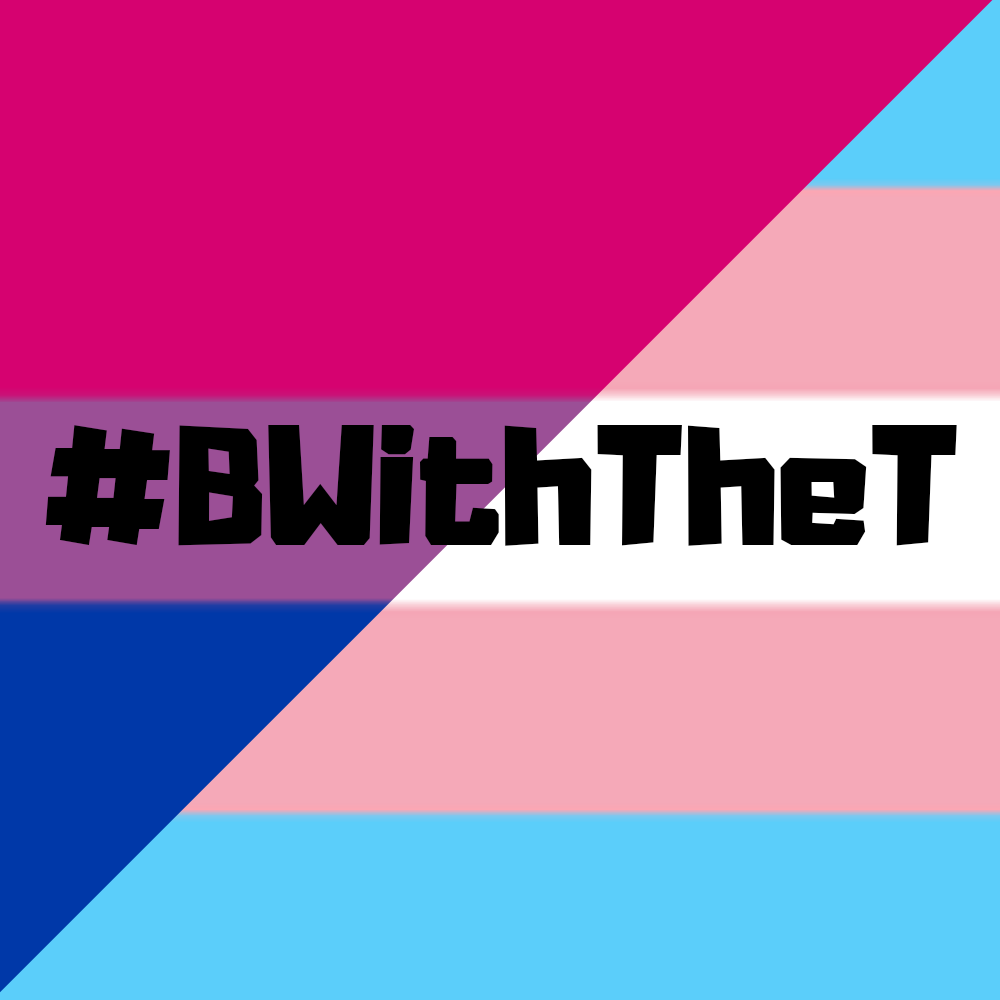BWithTheT

Here at Biscuit, we believe:
- Trans men are men.
- Trans women are women.
- Non-binary people are the gender(s) they say they are.
In 2019, we were proud to co-author the BWithTheT open letter that kicked off the BWithTheT movement. You can read it over here.
You might hear people say that bisexuality is innately transphobic or that identifying as bisexual is the same as saying trans people don't exist. At Biscuit, we know neither of these things are true.
“Bisexual movements don’t get enough credit for breaking the either/or of sexual orientation. And they did it long before gender scholars, activists, and radicals came on the scene.”
Bisexuality isn't transphobic (thoughsome bisexuals are)
“Do not assume that bisexuality is binary or duogamous in nature; that we must have “two” sides or that we MUST be involved simultaneously with both genders to be fulfilled human beings. In fact, don't assume that there are only two genders.”
Bisexuality, by definition, challenges the assumed binary nature of sexual and romantic attraction. That's not to say that some bisexual people aren't transphobic – it's a sad fact that you can find transphobia in all walks of life – but as advocates for the community, its our job to challenge that.
It does no one any favours to claim that transphobia doesn't exist in the bi community, and it hurts trans, non-binary and genderqueer bisexuals the most.
Sharing our communities
Not only is bisexality inclusive of transgender people, but transgender and bisexual communities have been allies for decades. We also know that trans people are more likely to be bi+ than cis people are, which makes it particularly important to acknowledge our shared history and communities.
As a term, ‘bisexual’ originally had a similar meaning to transgender, particularly non-binary, and/or intersex, referring to people who had both male and female traits.
Even after the word ‘bisexual’ reached the meaning it holds today, the sense that bisexuality was a natural ally of gender nonconformity and exploring potentials of sex, gender, and relationships remained.
“We enjoy the freedom to cross gender boundaries, to get closer to any person and explore the possibilities of relationships.”
Explicit allyship to trans communities was often seen as part of bisexual activism and communities for bi+ groups and individuals, whether those trans people were also bi+ or not.
“It is logical and necessary for bisexuals to recognize the importance of gender politics – not just because transsexuals, cross-dressers, and other transgender people are often assumed to be bisexual […] With respect to our integrity as bisexuals, it is our responsibility to include transgendered people in our language, in our communities, in our politics, and in our lives.”
Thanks to this allyship, bi+ spaces have earned a reputation as being trans-inclusive. That is not to say that no lesbian and gay spaces are also inclusive, but that the bi+ community has a specific legacy of being a shared and inclusive space.
“Bisexual spaces may be more welcoming to people of nontraditional, indeterminate, or uncertain gender identity than are strictly heterosexual or strictly homosexual spaces”
“The bisexual community should be a place where lines are erased. Bisexuality dismisses, disproves, and defies dichotomies. It connotes a loss of rigidity and absolutes. It is an inclusive term. […] Despite how we choose to identify ourselves, the bisexual community still seems a logical place for transsexuals to find a home and a voice. Bisexuals need to educate themselves on transgender issues. At the same time, bisexuals should be doing education and outreach to the transsexual community, offering transsexuals an arena to further explore their sexualities and choices. Such outreach would also help break down gender barriers and misconceptions within the bisexual community itself. […] If the bisexual community turns its back on transsexuals, it is essentially turning its back on itself.”
Organisations like the Bi Center in San Francisco and BiCon UK have been explicit in their trans-inclusive nature from the start, with the Bi Center running events for trans people since the 1980s and BiCon’s original guidelines directly saying that they “accept transgender people as being of their chosen gender, this includes any single gender events”.
One and the same
Transgender bisexuals have made huge contributions to the bi+ community and our activism. They belong and deserve to be celebrated for their work just as much as cisgender bisexuals do.
Look, for instance, at Martin Rawlings-Fein, a transgender man who co-founded the Bay Area Bisexual & Pansexual Network and San Francisco/East Bay BiCon. Or Bren Frederick, a genderqueer activist, who founded the Bi Pan Library. Then there’s Lo Shearing, who is non-binary, founded the Bi Survivors Network, and wrote Bi the Way: The Bisexual Guide to Life. Or Verity Ritchie, a genderqueer activist creating community spaces for bi and trans people with Kvartir, a Slovenia-based LGBTQ+ organisation.